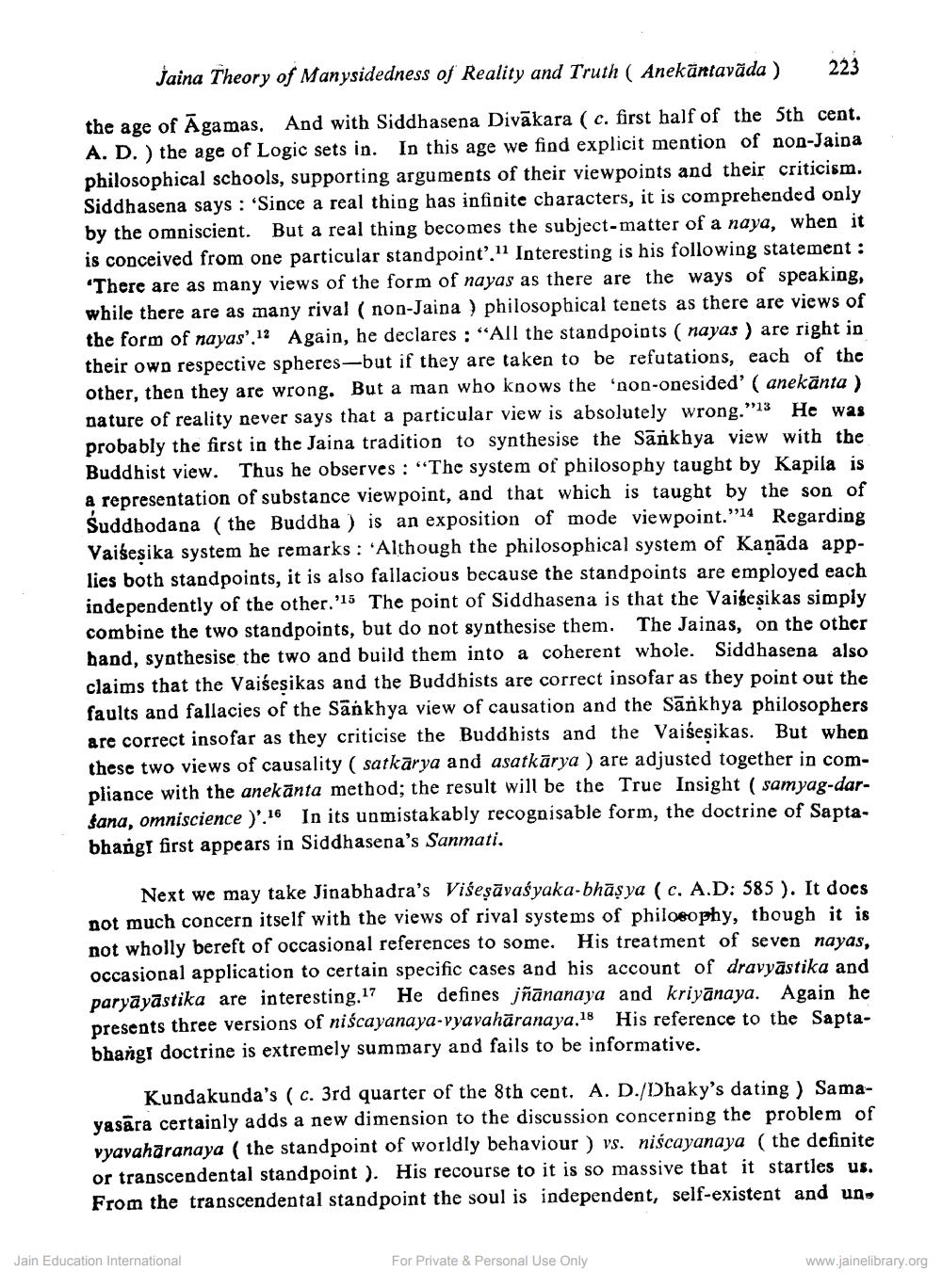________________
Jaina Theory of Manysidedness of Reality and Truth ( Anekāntavāda )
223
the age of Āgamas. And with Siddhasena Divākara ( c. first half of the 5th cent. A. D. ) the age of Logic sets in. In this age we find explicit mention of non-Jaina philosophical schools, supporting arguments of their viewpoints and their criticism. Siddhasena says: 'Since a real thing has infinite characters, it is comprehended only by the omniscient. But a real thing becomes the subject-matter of a naya, when it is conceived from one particular standpoint'. 11 Interesting is his following statement : “There are as many views of the form of nayas as there are the ways of speaking, while there are as many rival (non-Jaina ) philosophical tenets as there are views of the form of nayas'.12 Again, he declares : “All the standpoints ( nayas) are right in their own respective spheres-but if they are taken to be refutations, each of the other, then they are wrong. But a man who knows the 'non-onesided' ( anekānta ) nature of reality never says that a particular view is absolutely wrong."13 He was probably the first in the Jaina tradition to synthesise the Sankhya view with the Buddhist view. Thus he observes : "The system of philosophy taught by Kapila is a representation of substance viewpoint, and that which is taught by the son of Suddhodana (the Buddha ) is an exposition of mode viewpoint."14 Regarding Vaišeșika system he remarks: 'Although the philosophical system of Kanāda applies both standpoints, it is also fallacious because the standpoints are employed each independently of the other.'15 The point of Siddhasena is that the Vaigesikas simply combine the two standpoints, but do not synthesise them. The Jainas, on the other band, synthesise the two and build them into a coherent whole. Siddhasena also claims that the Vaiśesikas and the Buddhists are correct insofar as they point out the faults and fallacies of the Sänkhya view of causation and the Sankhya philosophers are correct insofar as they criticise the Buddhists and the Vaišeşikas. But when these two views of causality ( satkārya and asatkārya ) are adjusted together in compliance with the anekānta method; the result will be the True Insight ( samyag-darsana, omniscience ).16 In its unmistakably recognisable form, the doctrine of Saptabhangi first appears in Siddhasena's Sanmati.
Next we may take Jinabhadra's Viseşāvaśyaka-bhāşya (C. A.D: 585). It docs not much concern itself with the views of rival systems of philosophy, though it is not wholly bereft of occasional references to some. His treatment of seven nayas, occasional application to certain specific cases and his account of dravyāstika and paryāyāstika are interesting.17 He defines jñānanaya and kriyānaya. Again he presents three versions of niscayanaya-vyavahāranaya.18 His reference to the Saptabhangi doctrine is extremely summary and fails to be informative.
Kundakunda's ( c. 3rd quarter of the 8th cent. A. D./Dhaky's dating ) Samayasāra certainly adds a new dimension to the discussion concerning the problem of vyavaharanaya ( the standpoint of worldly behaviour ) vs. niscayanaya (the definite or transcendental standpoint ). His recourse to it is so massive that it startles us. From the transcendental standpoint the soul is independent, self-existent and un.
Jain Education International
For Private & Personal Use Only
www.jainelibrary.org




